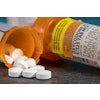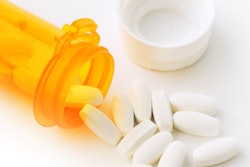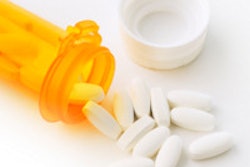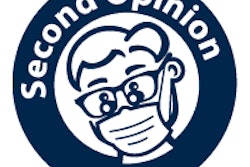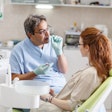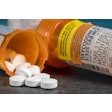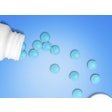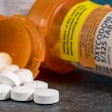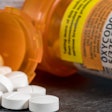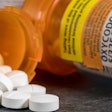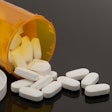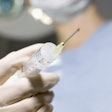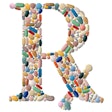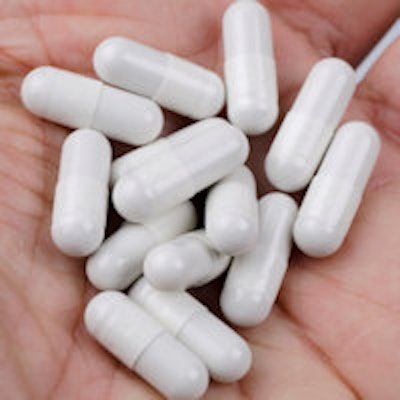
After surgery, many children use less than half of their prescribed opioid medication, according to a recent study. This finding is particularly worrying because many of these patients live with teenage siblings, who are at an increased risk for misusing leftover prescription drugs.
The researchers interviewed parents of hundreds of pediatric in-patients who were prescribed opioids after being discharged, including some patients who underwent oral and maxillofacial surgery. The study, which was presented at the 2015 American Society of Anesthesiologists conference in October, focused on children's opioid use, including whether leftover medication was disposed of.
"The key takeaway is that we really don’t know how much opioids children use when they are at home, and how much we should actually be prescribing when they are discharged," said lead study author Aaron Hsu, MHS, from the John Hopkins School of Medicine, in an interview with DrBicuspid.com. "Pain assessment can be subjective, so it can be difficult to determine the amount of pain medication that a patient will need. There simply needs to be more research done."
Most opioids don't get taken
With the U.S. experiencing a prescription opioid epidemic, it is crucial to limit access to unused medication, especially for teenagers who are more at risk for misusing and abusing opioids. This is pertinent in dentistry and oral and maxillofacial surgery, where many providers prescribe pain-relieving drugs.
 Aaron Hsu, MHS, is a research program assistant at the John Hopkins School of Medicine Department of Anesthesiology and Critical Care.
Aaron Hsu, MHS, is a research program assistant at the John Hopkins School of Medicine Department of Anesthesiology and Critical Care.Hsu and colleagues set out to study exactly what happens to the medication after it's prescribed and whether leftovers were disposed of. They interviewed 292 parents whose children were prescribed opioids for pain management after an in-patient surgery. The children were between the ages of 1 and 21, and while the majority of children included in the study underwent an orthopedic surgery, 7% had cleft palate or cleft lip repairs.
The authors found that, on average, patients only used 42% of their prescribed medication. More concerning, they found 82% of parents were not told what to do with the remaining medication, and only 6% of parents actually got rid of leftover medication.
"The finding that was most intriguing was the lack of education parents had or were given regarding the proper way to dispose of their leftover opioids," Hsu said. "Additionally, some parents were not even aware that they should dispose of the remaining pills or liquid."
Not disposing of unused prescription medication is a problem, because almost half of the patients had a sibling age 12 or older. These adolescents are at risk for drug abuse and addiction, and 90% of adults with substance abuse disorders started using drugs and alcohol before they turned 18, according to a presentation at the recent California Dental Association CDA Presents 2015 meeting.
"Their opioids end up sitting in medicine cabinets or on kitchen counters and can be an easy source of diversion or abuse," Hsu said. "Almost half of our patients had teenage siblings, and this is a primer population for drug diversion."
Clinicians can and should educate patients
The dental community, however, can take to steps to help reduce the number of leftover opioids.
Stuart Lieblich, DMD, an oral surgeon in Avon, CT, and also a clinical professor of oral and maxillofacial surgery at the University of Connecticut School of Dental Medicine, recommends dentists use preventive strategies to try and cut back on their patients' need for opioids. Specifically, Dr. Lieblich recommended patients take a preemptive analgesic, such as ibuprofen, before surgery and then after surgery on a timed basis rather than as needed. Using long-acting local anesthetics also may be a potential solution.
“We're worried about other children or other unsupervised people taking those medications. Even pets have been poisoned.”
In addition, Dr. Lieblich stressed the importance of educating parents and patients about the dangers of leaving unused prescription opioids around the home. In his practice, he addresses proper medication disposal during patients' follow-up visits.
"We're worried about other children or other unsupervised people taking those medications. Even pets have been poisoned," he said in an interview with DrBicuspid.com. "When patients come back for a follow-up visit, we typically ask how they are feeling. Are they still having pain? If they're not having pain, then we would tell the patient or the parent to dispose of the medication."
Dr. Lieblich recommended visiting the U.S. Food and Drug Administration website for information about the three ways to properly dispose of medication -- flushing, trash, and community take-back programs. The U.S. Department of Justice Drug Enforcement Agency has a database of community locations that take back unused drugs.
However, Hsu emphasized that part of the problem is that take-back programs are often inconvenient for patients.
"Some police stations and pharmacies will take back unused medications, but this is a cumbersome burden for the patient or parent," he explained. "More so, some pharmacies refuse to accept unused medications."
Scientists seek to end the epidemic
In light of the problems associated with leftover medication, the scientific community continues to try to understand and address the opioid epidemic. Specifically, Hsu is working on yet-to-be released research specifically for outpatient surgery, which includes many cleft palate and clip lip repairs. There is also research being done on slow-releasing anesthetics, such as Exparel (Pacira Pharmaceuticals), according to Dr. Lieblich.
"We are attacking this problem on many levels," Hsu said. "We are trying to determine what influences clinicians when they write pain medicine prescription, what patients and parents are doing with their leftover medication, and how much pain medication children need based on their surgical procedure or diagnosis."


